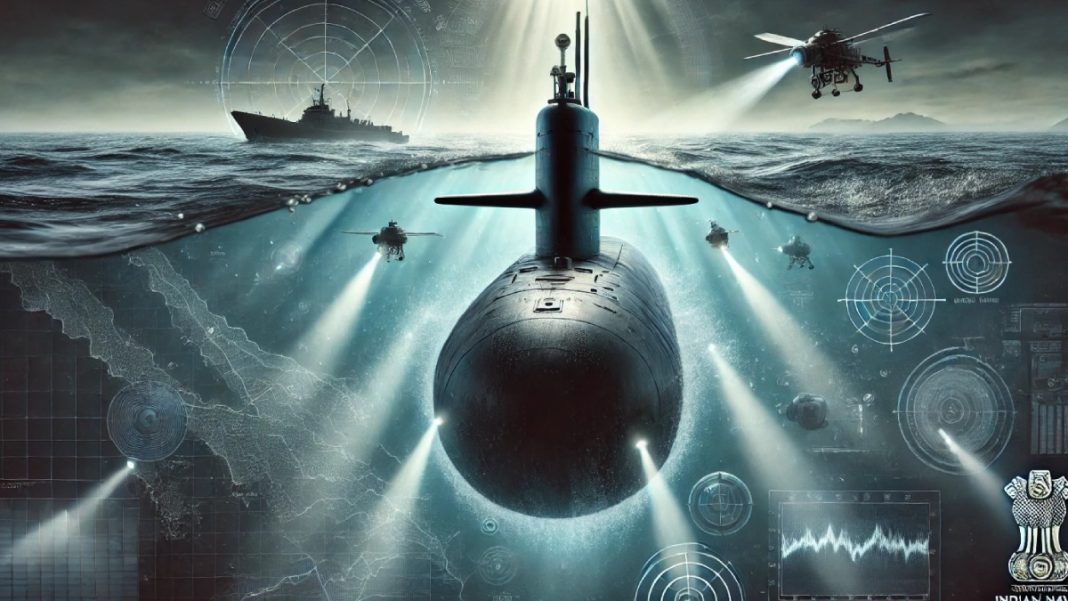As global maritime tensions escalate, the strategic importance of submarines and undersea surveillance systems has surged, positioning them as essential tools in modern naval warfare. For India, strategically located at the hub of international trade routes and geopolitical hotspots in the Indo-Pacific, such capabilities are vital for maintaining sovereignty, ensuring economic safety, and fostering regional stability.
The evolution of naval strategies reflects an increasing focus on anti-submarine warfare (ASW) capabilities, complemented by the integration of unmanned systems into existing frameworks. Submarines, once regarded primarily as platforms for stealthy offensive operations, have transformed into versatile assets capable of intelligence gathering, surveillance, and deterrence operations. With advanced stealth technology making them difficult to detect, submarines provide nations with a strategic advantage in both peacetime and conflict scenarios.
In India’s context, the need for an effective undersea fleet is underscored by its vast coastline, strategic sea lanes, and growing Chinese naval presence in the Indian Ocean Region (IOR). Initiatives like Project-75I, aimed at constructing six next-generation submarines equipped with Air-Independent Propulsion (AIP) technology, exemplify India’s commitment to enhancing its naval capabilities. AIP technology enables submarines to remain submerged for longer periods, significantly increasing their operational secrecy critical in high-stakes maritime environments.
Furthermore, India’s Defence Research and Development Organisation (DRDO) has made significant progress in developing indigenous AIP systems, fostering autonomy in defense technology and reducing dependence on foreign suppliers. This move supports India’s broader “Atmanirbhar Bharat” (self-reliant India) initiative, reinforcing domestic manufacturing and technological innovation.
In addition to submarine capabilities, undersea surveillance systems are crucial for maintaining maritime situational awareness. India is investing in a comprehensive grid integrating hydrophone arrays, unmanned underwater vehicles (UUVs), and advanced sensors for monitoring the vast expanses of the IOR. These systems are essential for early threat detection and securing critical chokepoints such as the Malacca Strait and protecting vital maritime assets.
Collaborative efforts with allies, notably the United States, Japan, and Australia through frameworks like the Quad, enhance India’s situational awareness, enabling effective identification and tracking of potential maritime threats. Such international partnerships showcase the importance of collective security in the region.
Looking towards the future, India’s maritime strategy involves leveraging innovation and collaborative innovations. Exercises such as the Malabar naval drills enable Indian forces to familiarize themselves with advanced ASW tactics and technologies. Meanwhile, the incorporation of cutting-edge tech such as artificial intelligence (AI) and quantum computing is reshaping undersea operational capabilities. AI can swiftly analyze acoustic data to differentiate between various underwater sounds, aiding in the timely detection of adversaries.
Moreover, the exploration of autonomous underwater vehicles (AUVs) and swarm robotics promises to revolutionize India’s approach to undersea warfare, enabling capabilities such as reconnaissance and area denial through coordinated actions.
Strategic partnerships within the Indo-Pacific further enhance India’s maritime capabilities, exemplified by collaborative research and development initiatives with key countries. This cooperation strengthens India’s counter-strategies in light of China’s expanding naval influence.
In conclusion, as the modern naval landscape becomes increasingly defined by the battles occurring beneath the waves, India’s investment in undersea capabilities is not merely reflective of military necessity but crucial for ensuring national and regional security. By prioritizing technological advancements, fostering innovation, and maintaining robust international collaborations, India is poised to assert its influence over the maritime domain, ensuring a stable and secure future in the Indo-Pacific. This undersea strategy, therefore, is critical for both the security of India and its role as a significant player in regional maritime politics.





